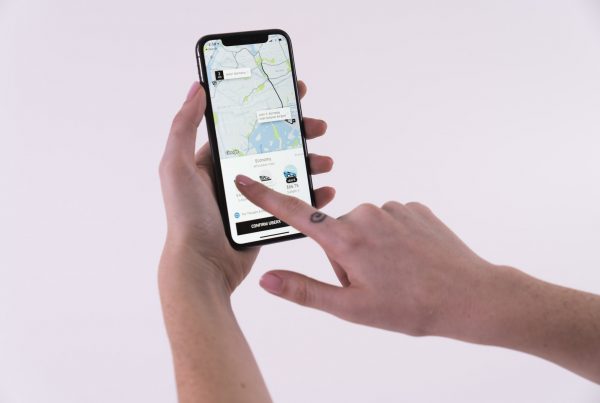“We are approaching the end of the automotive era… the end of the line for the automobile because travel will be in standardized modules. The end state will be the fully autonomous module with no capability for the driver to exercise command.” – Bob Lutz (former Vice Chairman of General Motors), “Kiss the good times goodbye,” Automotive News, November 2017.
Cars that can drive themselves are coming faster than many have predicted, but they are coming in a way that the general public might not expect. If you take away a car’s steering wheel, you take away more than the driver, you also take away the navigator. This is not a loss, it is great opportunity in transportation. The future of fleet management will become a critical feature of the entire autonomous vehicles technology stack. If done correctly this will be a good thing for our roads, environment and daily commutes. Just this year the CEO of Uber described an example of their AV roll-out plan, in their recent test city Phoenix:
“there will be 95% of cases where the company may not have everything mapped perfectly, or the weather might not be perfect, or there could be other factors that will mean Uber will opt to send a driver. But in 5 percent of cases, we’ll send an autonomous car, when everything’s just right, and still the user will be able to choose whether they get an AV or a regular car. That initial 5 percent is going to grow to 10… in five years, we will have the perfect driver in Phoenix.”
This was of course before the tragic incident in Tempe, Arizona where a pedestrian was killed by one of Uber’s self driving cars while it was driving autonomously. This has lead to Uber suspending their program, Toyota has followed suit, other companies are continuing to test. Regardless of accidents, development will continue, Waymo has already stated that this accident would not have happened with their self driving technology, which means we are moving toward a future with more fleets of AVs on the road.
There is a difference between AV use cases where you have a car in your driveway, and can have it drive you anywhere after you put in an address. Most people imagine a similar use case for AVs in the future. This is not how a fleet will operate. A fleet has a different mindset, it is not a individual one, it is a global one. Without this mindset we get the ghost car scenario.
If people get AVs, the roads will become clogged with an autonomous, efficiency destroying, traffic causing ghost, a ghost that our society will happily create in the name of convenience. You just know this will happen. Let’s say your brand new Level 4-5 Autonomy self driving car, that was miraculously made legal, and purchased for several hundred thousand dollars is driving you and you want to step into the mall for a smoothie and shopping excursion, but don’t want to pay for parking, because parsimony is how you saved up for a high tech luxury vehicle. You tell your car to circle the block while you shop. Which it does for several hours. While this is a future full of more choices and more control it also has massively more cars clogging the road providing even less utility than when there only have one person riding inside, imagine a whole city of empty cars driving around at the whims of their individual owners.
The zero-occupancy scenario is not in the cards just yet for two interrelated reasons: limitations on technology means that we need to control cars in fleets first, and limitations on road space means self-driving cars improperly used means much more traffic and inefficiency than we have today. But just as making cars capable of driving themselves is very difficult, it is also difficult to manage a fleet of them transporting people.
We do not want self driving taxis, taxis are only good at transporting a few people from point A to B. They are not a comprehensive solution, and really are just a product of 20th century transportation paradigms. We also do not want public transportation, as it is now, no one in North America would give up the convenience of a personal car just to have a self driving bus pick them up. You need to share the cars, as this is how spectacular reductions in vehicles on the road will be possible, check out this article regarding the potential of shared autonomous vehicles for taking 9 out of 10 vehicles off the road. This is what applying route optimization software that can automatically manage the routes of shared vehicles in real-time can do. This is why every self driving vehicle fleet is going to need this type of technology.
Without optimizing routes and schedules of shared vehicles the roads will be worse than they are now, without fleet management software self driving cars will be empty taxis, not a revolutionary force in personal transportation. With multiple companies testing their AV “ride-hailing” and “robo-taxis” in 2018 and 2019 the importance of real intelligence managing the coming and goings of the vehicles will come to the forefront.
Photo credit: Travis Wise – Self Driving Car



